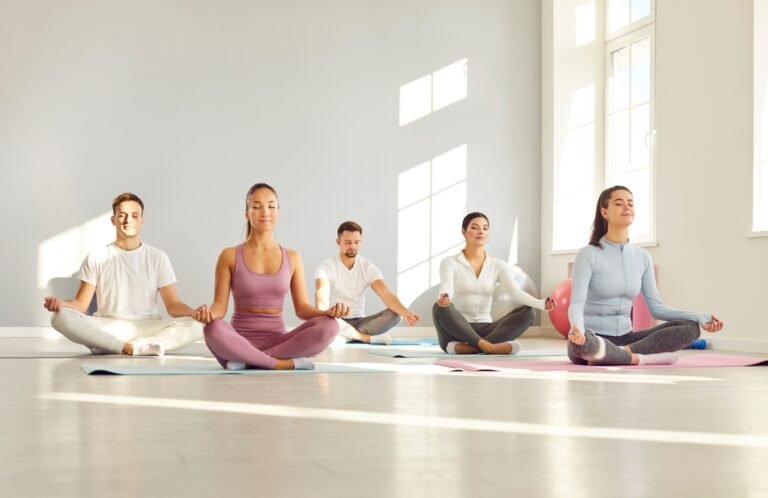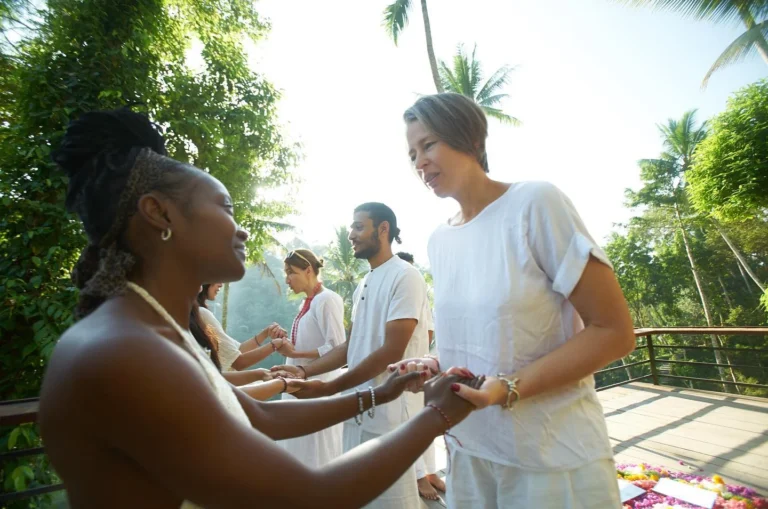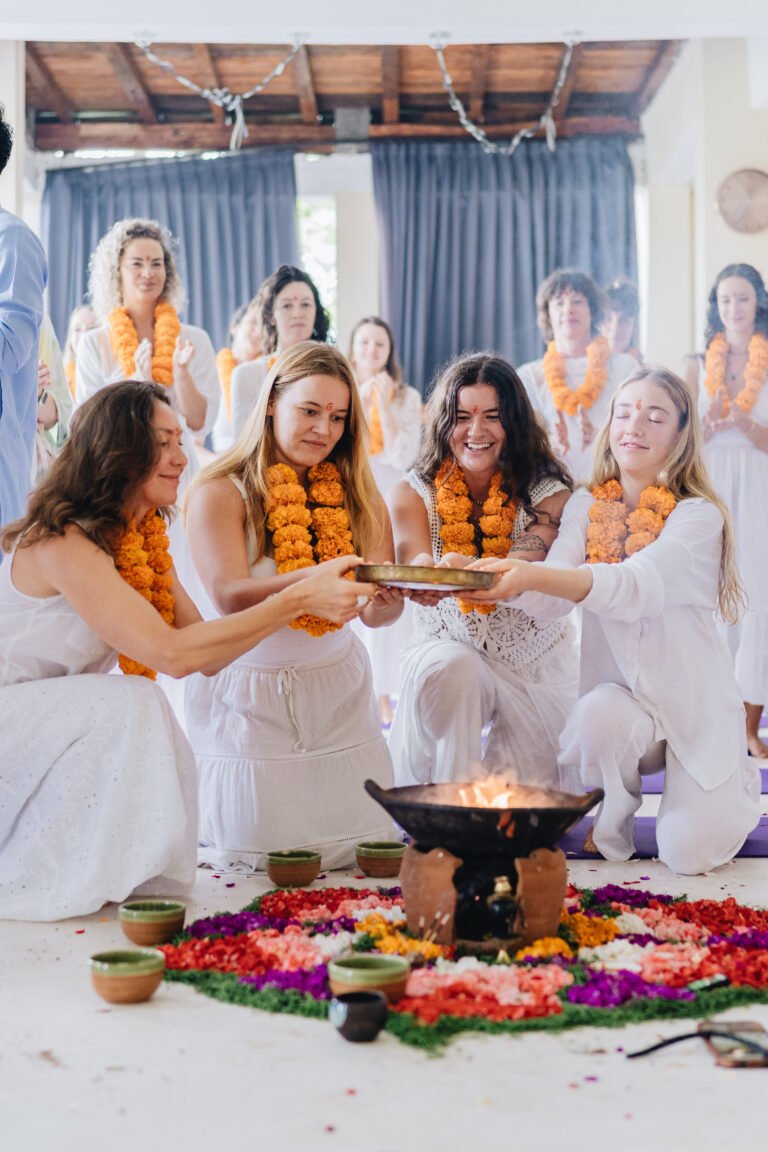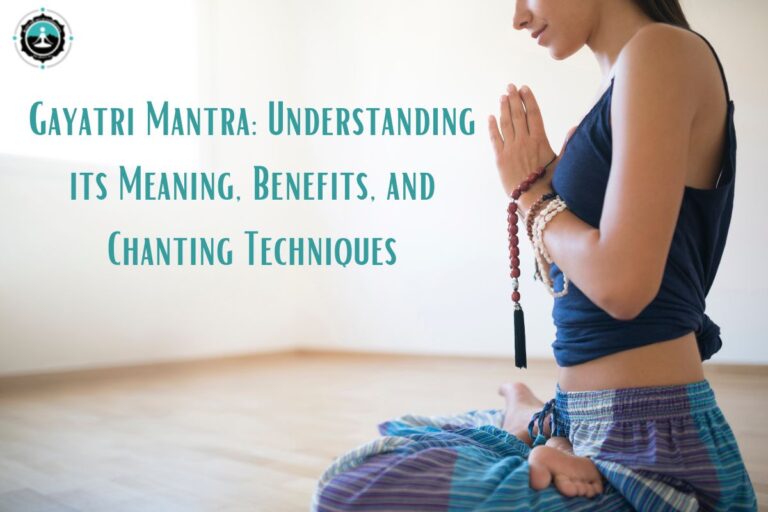Yoga for Flexibility and Strength: Let’s become stronger together
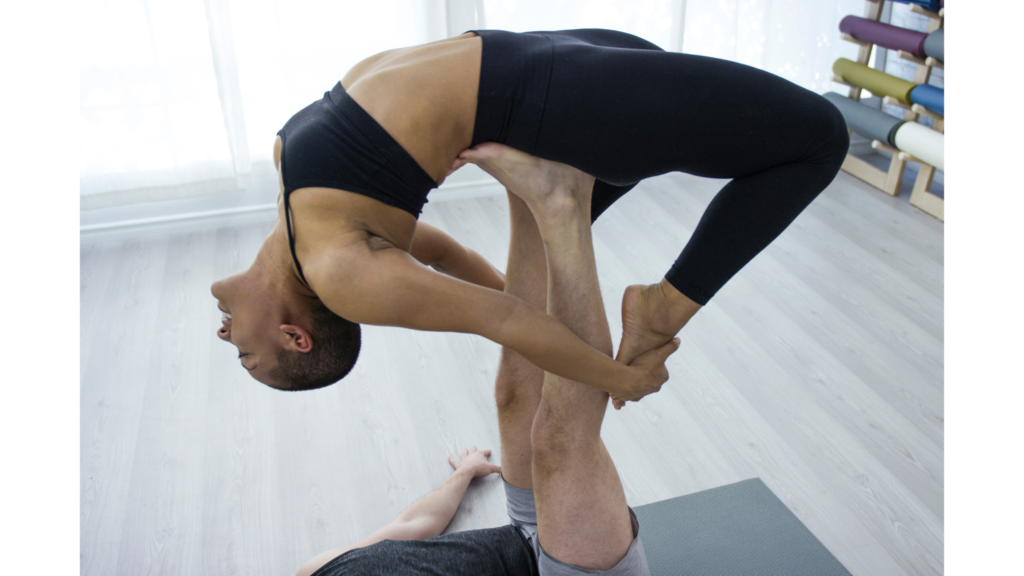
Hey there,
Fellow yogis and the curious minds! Have you ever wished to just effortlessly touch your toes, lift that heavy suitcase without breaking a sweat, or feel alive and bursting with energy all day long? You share this desire with many! Several of us want flexibility and strength, and it’s in the cultivation of these two that yoga, with all its magic, plays a role.
Remember how, back in high school, you were trying to touch your toes, feeling the threat of splitting in half? Or the persistent back pain that just doesn’t seem to go away? These typical struggles are very real, but they don’t have to be your reality.
Yoga draws on old knowledge for modern life, a complete physical and mental approach to wellness as both body and moving meditation. It is one thing to twist oneself up in pretzel shapes (those are cool, after all!). Yoga is a journey of self-discovery whereby, with each mindful movement and with the breath, one cultivates strength, flexibility, and mindfulness.
In this blog post, we will go in-depth into the science of learning how yoga improves flexibility and gains strength. Learn about the best kind of yoga for your level of fitness, as well as tips for integrating it into your everyday life. So like it, whether you are a practiced yogi or not yet on the mat, hurry and join the adventure to awaken the Zero that does not cope with yoga.
The Science Behind Yoga and Flexibility: Unlocking Your Body’s Potential
Perhaps getting a little nerdy! You know that sweet feeling when you stretch out after a long run, and tight muscles let go? Well, yoga acts similarly but on another plane.
- Stretching It Out: Yoga postures, or asanas, are structured to gradually and delicately open up your joints to as long a range of motion as possible. With those tight hips, poses such as Pigeon and Lizard can help you to gradually open them for ease of movement.
- Gliding Muscles: You know how smoothly a well-oiled machine runs? Yoga helps to keep the muscles and tendons supple and pliable. You could say that stretching regularly helps keep your tissues from going stiff and “sticking” together.
- Nervous System Sneaky: It’s not just physical stretching; your nervous system also plays an important role. If you think about it, when holding a yoga pose, you’re sending a signal back to your nervous system. It thus soothes the zestfully overactive tense in the muscles.
- Blood Flow Increase: Yoga postures, especially inversions (like Downward Facing Dog), greatly improve blood flow to muscles and connective tissues. When there is a rich supply of oxygen and nutrients, the tissues enjoy more rapid repair and recovery.
But here’s the real secret sauce:
Mindful movement matters on an aware level: It isn’t simply about the posture but also about the way you move through your posture. Yoga mindfulness means becoming aware of and in tune with bodily sensations, tightness, and sense of release. With increased awareness, proprioception becomes your ally in deepening your stretches into greater and safer ranges of motion.
Through the combination of physiological processes and the power of mindful movement, yoga becomes heavenly transformative. It is more than flexibility; it is understanding your body, respecting its limitations, and slowly relinquishing them.
Yoga for Strength: Building a Stronger Foundation (You’ll be surprised!)
You think, “Yoga? Strength? But to me, those are people gliding on the mat with grace.” That’s a lovely image, but yoga certainly builds strength!
Beyond the Flow: Power Yoga
Let us chat a bit about Power Yoga, Vinyasa Flow, and Ashtanga. These are all fast-paced and dynamic, commonly combined with some hard sequences and challenging postures. Think of them as your bodyweight gym work set—you’ll be working with your own weight as resistance; the burn will happen!
How Yoga Turns You into a Strength Machine:
- Plank power: Ever been in a plank? Those core muscles will be doing hard work! Yoga contains a whole bunch of weight-bearing postures—plank, chaturanga (a kind of low push-up), and upward-facing dog—that challenge your core, your upper body, and your whole lower body.
- The isometric advantage: Isometrics, like crow pose (balance on arms), appear deceptively easy but are tremendously taxing. You train muscle endurance and stability through isometric holds.
- Using your body weight as resistance: In yoga, one basically resists with one’s weight. This may sound simple, but believe me, it works like a charm. You will find variations of poses as you advance, which will only add to the challenge.
The Amazing Benefits of Yoga Strength:
- Balance Boost: Yoga miraculously improves your balance and coordination. Those warrior and tree poses put your stability to the test constantly.
Strong Bones: Weight-bearing exercises like the ones in yoga are helpful to increase bone density, especially important as we age. - Athletic Advantage: Whether you’re a runner, cyclist, or dancer, yoga can enhance your athletic performance. It builds strength, flexibility, and body awareness—all for optimal performance.
And there you have it! Yoga isn’t just about flexibility: It’s an awesome way to gain strength and further your overall fitness and confidence in your body.
Yoga for Flexibility: A Gradual Approach (Listen to Your Body!)
Unlike the common misconception, flexibility doesn’t mean touching your toes instantaneously. Flexibility is a journey that should unfold step by step, like every other journey.
Alignment is Key
Let’s talk about organization before you jump into those deep expanses. Proper alignment is essential for safe and efficient stretching. Think about it: you wouldn’t pull yourself up if you had to reach for the top shelf, would you? For safe access, you would use a sturdy ladder. In a similar vein, proper alignment is crucial to performing stretches without getting hurt.
Building Blocks for Yoga: Poses Essential for You
Let us begin with some of these basic postures.
- The Downward-Facing Dog: A classic stretch that offers good work through the larger muscle groups of your body; it stretches the hamstrings, calves, and spine.
- The Cat-Cow: A gentle back bend and forward fold for warming up the spine and achieving a greater range of motion.
- Seated Forward Fold: A simple pose that gives a stretch to the hamstrings, calves, and lower back.
Gradually Deepen the Posture:
Don’t force anything on yourself! As you grow stronger, allow your stretching to get deeper progressively. Listen to your body. If something feels too intense, take a step back. Progress is more important than perfection.
Props to the Rescue
You can safely and comfortably expand your stretches with yoga props like blocks, straps, and blankets. For instance, the block will support you when you fold forward and allow you to touch the floor without overstretching your hamstrings. Flexibility is a journey, not a race, so give yourself space and time, respect your body’s limitations, and enjoy the ride!
Creating a Personalized Yoga Practice: Your Unique Journey
No two yoga practitioners are alike, much like snowflakes. If something works for one individual, it might not work for others. It is crucial to pay attention to your own practice because of this.
Know yourself (and your body!):
Before you leap into an often-challenging yoga class, take a moment or two to assess your present flexibility and strength levels. Can you touch your toes? How long can you hold a plank? Be honest about it! This will guide your choice of classes and poses appropriate for your current status.
Customize Your Practice Accordingly:
Yoga is hugely flexible. If you’re entirely new to yoga, start with the beginners’ classes and lay down a good base for the real deal. Want to really work on your flexibility? Take classes that concentrate on stretching and restorative poses. Athletes might consider adding power yoga or vinyasa flow to their program to increase strength and endurance.
Importance of Guidance:
If you ever get a chance to learn from a skilled teacher, take it! A qualified yoga instructor can:
- Guide you on the right alignment: This keeps you safe and ensures each asana reaps you the maximum benefit.
- Offer the ease of modifications or alternatives: They can suggest modifications particular to your level of individual needs and limitations.
- Provision of personalized feedback: They can point out a few valuable cues to help deepen any pose.
Remember: Yoga is a path to self-discovery. Be gentle and kind with yourself; rejoice in your accomplishment, and above all, have fun!
Creating a Personalized Yoga Practice: Your Unique Journey
Just like two snowflakes are never alike, precisely the same can be said for yoga practitioners: what works for one might not work for another. This is why creating a personalized practice is essential.
- Know Yourself (and Your Body!): Before you jump into an advanced yoga class, it is wise to examine your present state of flexibility and strength. Can you touch your toes? How long can you hold a plank? Be honest! It will help you in selecting classes/poses according to your current abilities.
- Customize Your Practice: Yoga is born to be adaptive. If you’re a beginner, start with classes suited for beginners and learn the basic foundations. If you’re working on becoming more flexible, try classes that emphasize stretching and restorative poses. If you are an athlete, consider weaving in power yoga or vinyasa flow into your regimen to up your strength and endurance.
The Importance of Guidance: Learning from an experienced teacher is incredibly valuable. A qualified yoga instructor will:
- Guide you on proper alignment: This means avoiding injuries and maximizing the benefits of each asana.
- Offer you modifications and variations: modifications according to your individual needs and limitations.
- Feedback Customized: While keeping poised, they can give you personalized pointers to help you get deeper into your practice.
Remember: Yoga is a journey of self-discovery. Be patient with yourself, enjoy the experience, and have fun!
Conclusion
In the end, we have talked about the science behind yoga’s magic, how it builds strength and flexibility, and how to include yoga into our busy lives.
Yoga is neither a muscular workout nor a sport; it is a journey of self-discovery in connecting the body, mind, and breath. Rather, it is a place where you build strength, not only physical but also mental and emotional.
Whether you are an experienced practitioner or a neophyte, I invite you to explore great possibilities with this beautiful practice. Begin with a beginner’s class, experiment with different styles, and let one begin that feels right for you.Remember: every journey begins with the first step. So, spread out your mat, take a deep breath, and be open to the transforming power of yoga!


